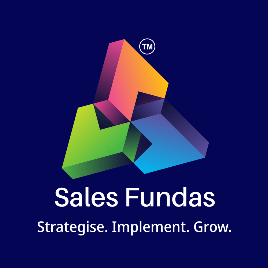The Ultimate Guide to Inbound vs. Outbound Marketing Strategies
- Jayant Kelkar

- Jun 28, 2023
- 5 min read
Updated: Nov 27, 2024

In the ever-evolving landscape of digital marketing, businesses are constantly seeking effective strategies to promote their products or services and reach their target audience. Two prominent approaches that often come into play are inbound marketing and outbound marketing. While both aim to drive customer engagement and generate leads, they employ different tactics and have distinct advantages. In this comprehensive guide, we will explore the intricacies of inbound vs. outbound marketing and help you choose the right strategy for your business.
Table of Contents
Understanding Inbound Marketing
Exploring Outbound Marketing
Comparing Inbound and Outbound Marketing
Determining the Right Strategy
Implementing a Holistic Approach
Conclusion
1. Understanding Inbound Marketing
Inbound marketing is an approach that focuses on attracting potential customers by creating valuable content and establishing meaningful connections. It revolves around providing helpful information, addressing customer pain points, and building trust. The core idea behind inbound marketing is to pull customers towards your brand naturally rather than pushing promotional messages aggressively.
1.1 The Principles of Inbound Marketing
To effectively leverage inbound marketing, it's essential to understand its core principles:
1.1.1 Content Creation
Creating high-quality, informative content is the cornerstone of inbound marketing. By offering valuable resources such as blog articles, eBooks, videos, or podcasts, businesses can position themselves as industry experts and capture the attention of their target audience.
1.1.2 Search Engine Optimization (SEO)
SEO plays a crucial role in making your content discoverable online. By optimizing your website and content for relevant keywords, you increase the chances of ranking higher in search engine results, driving organic traffic, and attracting qualified leads.
1.1.3 Social Media Engagement
Engaging with your audience on social media platforms is a powerful way to expand your reach and foster relationships. Sharing valuable content, responding to comments, and actively participating in industry conversations can help establish your brand's authority and attract potential customers.
1.2 Benefits of Inbound Marketing
Inbound marketing offers several benefits for businesses:
1.2.1 Cost-Effectiveness
Compared to traditional outbound marketing tactics like TV or radio ads, inbound marketing can be more cost-effective. By leveraging content creation and digital channels, businesses can reach a broader audience without hefty advertising expenses.
1.2.2 Targeted Audience Reach
Inbound marketing enables businesses to focus on their target audience. By understanding customer personas and preferences, you can tailor your content to resonate with specific demographics, ensuring that your message reaches those most likely to convert into customers.
1.2.3 Long-Term Relationship Building
Inbound marketing emphasizes building long-term relationships with customers. By consistently delivering valuable content, businesses can nurture leads, gain customer loyalty, and drive repeat business, leading to sustainable growth.
2. Exploring Outbound Marketing
Unlike inbound marketing, outbound marketing takes a more proactive and direct approach to reaching potential customers. It involves initiating contact with the audience through various channels, such as television ads, cold calling, email blasts, or direct mail. Outbound marketing often interrupts the customer's experience to deliver promotional messages.
2.1 Traditional Outbound Marketing Channels
2.1.1 Video Ads
Video ads have long been popular outbound marketing channels. They allow businesses to reach a wide audience by broadcasting commercials during popular shows or radio programs. However, they can be expensive and may lack the precision targeting offered by digital marketing.
2.1.2 Cold Calling
Cold calling involves reaching out to potential customers by phone, often without any prior relationship or consent. While it can yield results, it is often considered intrusive and has a lower success rate compared to other marketing methods.
2.1.3 Email Blasts and Direct Mail
Email blasts and direct mail campaigns involve sending promotional messages or offer to a large number of recipients simultaneously. While these methods can still be effective when targeted correctly, they often face challenges with low open rates and the risk of being labelled as spam.
2.2 Benefits of Outbound Marketing
Outbound marketing offers distinct advantages in certain scenarios:
2.2.1 Wide Reach and Brand Awareness
Outbound marketing allows businesses to quickly reach a large audience, raising awareness about their brand or product. This can be particularly useful for new businesses or those entering competitive markets.
2.2.2 Direct Sales Impact
Outbound marketing tactics like cold calling or direct mail can have a more immediate impact on sales. By directly approaching potential customers, businesses can present their offers and persuade them to make a purchase.
2.2.3 Amplifying Special Offers
Promoting time-sensitive deals or limited-time offers through outbound marketing channels can create a sense of urgency among customers. This urgency can prompt them to take immediate action and make a purchase.
3. Comparing Inbound and Outbound Marketing
To choose the right marketing strategy for your business, it's essential to understand the key differences between inbound and outbound marketing:
Aspects | Inbound Marketing | Outbound Marketing |
Approach | Passive: attracting customers organically | Proactive: Initiating contact with potential customers |
Communication | Two-way communication | One-way communication |
Audience Targeting | Focused and specific demographics | Wider rich, less precise targeting |
Content Focus | Value-drive, informative content | Promotional Messages, Offers |
Cost | Relatively lower cost | Higher cost, especially with traditional channels |
Long-term Impact | Build long-term relationships | Immediate impact on sales |
4. Determining the Right Strategy
When deciding between inbound and outbound marketing, consider the following factors:
4.1 Business Goals
Identify your business goals and objectives. If your focus is on building brand authority, establishing long-term customer relationships, and nurturing leads, inbound marketing may be the ideal strategy. Conversely, if you need immediate sales results or have a limited time to promote special offers, outbound marketing can be more suitable.
4.2 Target Audience
Analyze your target audience and their preferences. Research their online behaviour, social media usage, and content consumption patterns. This information will help you determine whether your audience is more receptive to inbound strategies or if they are better reached through outbound channels.
4.3 Available Resources
Evaluate your available resources, including budget, time, and expertise. Inbound marketing often requires consistent content creation, search engine optimization, and social media management. On the other hand, outbound marketing may involve higher upfront costs for advertising or sales teams.
4.4 Synergy Between Strategies
Consider leveraging both inbound and outbound marketing strategies in a complementary manner. By integrating the strengths of both approaches, you can create a comprehensive marketing plan that maximizes your reach and impact.
5. Implementing a Holistic Approach
To truly excel in today's competitive digital landscape, it's often beneficial to adopt a holistic marketing approach that combines the best elements of inbound and outbound strategies. Here are some tips to implement a well-rounded marketing plan:
5.1 Content Marketing Integration
Leverage the power of content marketing to attract and engage your target audience. Develop a content strategy that aligns with your business goals, creates valuable resources, and optimizes them for search engines. This will drive organic traffic and nurture leads.
5.2 Social Media Amplification
Use social media platforms strategically to amplify your content and engage with your audience. Share your valuable resources, participate in relevant conversations, and leverage social media advertising to expand your reach and attract potential customers.
5.3 Paid Advertising Campaigns
Consider incorporating targeted paid advertising campaigns into your marketing mix. Platforms like Google Ads, social media ads, or sponsored content can help you reach a wider audience and generate leads quickly.
5.4 Continuous Monitoring and Optimization
Regularly monitor your marketing efforts, track key performance indicators (KPIs), and optimize your strategies based on data-driven insights. Continuously refine your approach to ensure maximum impact and stay ahead of your competition.
Conclusion
Inbound and outbound marketing are two distinct approaches, each with its own advantages. While inbound marketing focuses on attracting customers organically by providing value and building relationships, outbound marketing takes a more direct and proactive approach. The right strategy for your business depends on your goals, target audience, available resources, and the synergy between the two approaches.
To achieve optimal results, consider adopting a holistic marketing approach that integrates both inbound and outbound strategies. By leveraging content marketing, social media engagement, paid advertising, and continuous optimization, you can create a comprehensive marketing plan that positions your business for success.
Remember, the key to effective marketing lies in understanding your audience, delivering valuable content, and adapting to the ever-changing digital landscape. Embrace the power of both inbound and outbound strategies, and let them work together to propel your business forward.




Comments